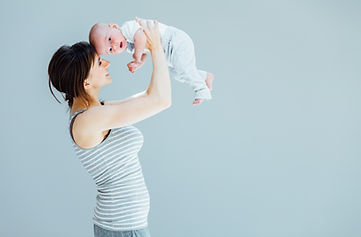Uterine Fibroids & Fertility: Treatment Options in Ottawa

Uterine fibroids, also called leiomyomas, are a type of growth that can occur in one of three layers of the uterus. Submucosal fibroids protrude in to the uterine cavity itself and can significantly affect fertility. Intramural fibroids are growths in the muscular wall of the uterus. And finally, subserosal fibroids grow towards the outside of the uterus. Uterine fibroids are non-cancerous and rarely develop in to cancer. They do not increase the risk of developing cancer.
The symptoms of fibroids vary depending on the size of the growth(s) and its location. They commonly result in very heavy periods or periods become longer than usual for you. Other symptoms are a result of a bulky mass pushing on other organs or anatomical structures. For example, it may become more difficulty to pass a bowel movement, empty the bladder, having more frequent trips to the bathroom, and a sensation of pressure and/or pain. It can also contribute to low back pain.
Common Factors Contributing to Uterine Fibroids
1. Genetics: the risk of developing fibroids increases if their is an immediate family member who also had fibroids. The genes expressed in the fibroid tissue can actually vary from the genes in the uterine muscle.
2. Hormonal Imbalance: concentration of receptors for estrogen and progesterone are significantly higher in the fibroid than the uterus. High levels of progesterone and/or estrogen is like jet fuel for fibroids. Having estrogen dominance (when estrogen levels are higher most of the cycle compared to progesterone levels) can also increase growth of fibroids.
3. Ethnicity: being of African-american descent significantly increases the risk of developing fibroids. A part of the current understanding of why this is may be from a deficiency in the COMT enzyme, which helps to convert more dangerous forms of estrogen to less dangerous forms in the liver.
4. Vitamin D Deficiency: Vitamin D helps to support function of the COMT enzyme in the liver, and it helps to transform more potent forms of estrogen to different forms which are less likely to stimulate fibroid growth.
5. Diet: Consuming a diet that is heavier in red meats, low on vegetables, and consuming more alcohol seems to stimulate fibroid growth as well.

Treatment Options for Uterine Fibroids
1. Fertility Acupuncture: Fertility acupuncture helps to improve hormonal balance and supports lower stress levels.
2. Clinical Nutritional Supplements: The use of specific nutritional supplements can help to support detoxification of estrogen in the body. They can be used to help support optimal liver detoxification and bowel movements (as constipation allows for estrogen in the feces to be reabsorbed in to the blood).
3. Hormone Replacement: Bioidentical progesterone may help to correct estrogen dominance in Women that have very low levels of progesterone. The balancing of the hormones can help to support a healthy uterine environment and balance the effects of estrogen.
4. Botanical Medicine: Specific botanical therapies are helpful in blocking the effect of estrogen on the receptors of the fibroids. This helps to reduce the hormonal signal of estrogen to continue allowing the fibroid to proliferate and grow.

Common Symptoms of Uterine Fibroids
The symptoms of uterine fibroids can vary greatly depending on the size of the fibroid(s), the quantity of fibroids, and the type of fibroid(s) present (see above). The size of a fibroid can vary quite a bit as well, it can be small as a grape to as large as an orange or grapefruit (or bigger). The most common symptoms associated with fibroids is heavy bleeding and prolonged periods. Fibroids may go undetected for a long period of time if a patient simply takes a birth control pill to address the heavy and prolonged periods.
The size of the uterus can become enlarged as fibroids grow (usually slowly) and over time the pressure it exerts on the bladder and this can in many cases result in increased urinary frequency as well as abdominal pressure. This can significantly impact quality of life. Rarely, the fibroids can lead to pelvic pain as well.
As the fibroids grow in response to increasing estrogen levels, a Women with fibroids, once pregnant, may have an enlargement in the fibroids as well. Depending on the size and location, this may increase the risk for miscarriage and/or preterm labour. Some cases of recurrent miscarriage are due to the presence of uterine fibroids. In some cases, fertility clinics may recommend the removal of fibroids immediately before a fertility treatment, such as IVF.
Additionally, pain during intercourse and pain the back and/or lower limbs may also be present. A common lab test that can catch uterine fibroids is anemia on a blood report. The heavy and prolonged periods can lead to iron deficiency and a low red blood cell count.
Many of the symptoms of fibroids resolve on their own once in menopause, however, this can be years away for many patients that are struggling with uterine fibroids.
Surprisingly, uterine fibroids may be present in up to 40% of Women by the age of 35 and almost 50% of Women by the age of 50. However, in many cases the fibroids are so small that they can go undetected unless picked up by a routine transvaginal and/or abdominal ultrasound at a fertility clinic.




